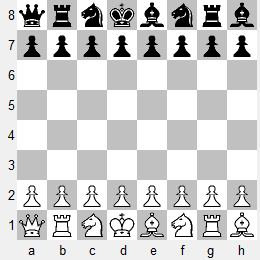Discovered a start position SP today that has a ridiculous amount of viable first moves options! More than standard chess in fact, 15 in total. The absolute maximum number of first moves in some Chess960 starts is 21, but usually a large number of those can be [written] off because they are possible but theoretically too weak.
He then lists the 15 moves and reveals the methodology used to determine that number.
After a depth-24 search, Houdini-3 thinks that the variation in score between the best and worst first moves in that list is +/- 0.1 which is tiny. [...] In contrast, standard chess has at the very most 13 viable first moves but the variation in score is much bigger at +/- 0.43.
In other words, 1) Run your engine to a fixed depth on a certain SP, and 2) Record how many top moves have a similar evaluation. I imagine that different engines produce different results and that the results for one engine across all 960 SPs would probably tell us something new about the entire set of SPs.

SP491 QRNKBNRB
A few months ago I did a similar experiment that I recorded in a post titled First Move Diversity in Chess960. Working with a sample of real games between real players, most of them less than master strength, I calculated how many different first moves had been played with each SP. My sample was small by chess960 standards, so I'm not convinced the results showed anything conclusive. If the sample had been an order of magnitude larger, I could have also counted responses to the first moves.
For SP491 QRNKBNRB, I discovered that five different first moves had been played (shown here with the number of times each move was played):-
5: 1.g3
4: 1.g4
3: 1.d4
1: 1.Nd3
1: 1.Ng3
Note that the last move in this list, 1.Ng3, isn't even one of the 15 moves on HarryO's list. What move would I play in SP491? That's an exercise that I'll save for another post. In the meantime, it's also worth noting that SP491 was the position that appeared in The First Recorded Fischerandom Game, GM Bronstein - IM Douven 1996. Bronstein, who missed becoming World Champion by the narrowest of margins, played 1.d4.

1 comment:
Mark and all readers,
I have posted the following at HarryO's Jungle blog:
Great post Harry, very interesting and informative.
Also, this kind of evidence suggests that opening variety would be significantly greater in a SP491 world than in the traditional SP518 world.
When I understood what this post was about, I hoped that SP491 was a setup that had...
(A) no corner bishops, and
(B) both white knights on the same shade of square as each other, and
(C) a larger probability of castling on the a-wing (meaning like O-O-O or "castling long" in traditional chess; where the king arrives on the c-column).
However, SP491 has only (C) of these above attributes.
So I wonder which setup that does have all three of these attributes would have the most viable first moves.
It is slightly disappointing that SP491 seems to give White a bigger than average advantage over Black, according to...
http://www.computerchess.org.uk/ccrl/404FRC/opening_report_by_eco.html
Also, unfortunately the draw rate for SP491 is bigger than average:
QRNKBNRB Draw=19.4% WhiteWins=56.9%
Thanks.
GeneM
2013/09/29
Post a Comment